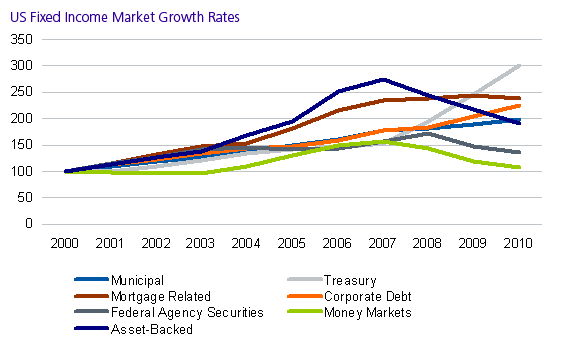Fixed Income Trading in the US: Barriers to Automation
Abstract
Growth in electronic trading and the increased prevalence of multiasset strategies raised the expectation that algorithmic trading would penetrate the fixed income markets. However, unlike cash equity and foreign exchange markets before them, the fixed income markets present unique challenges which deter automated trading.
In a new report, Fixed Income Trading in the US: Barriers to Automation, Celent studies the US market for fixed income. There has been a change in its composition since the financial crisis, and some instruments such as mortgage-related securities are not as dominant in terms of outstanding or trading, which would be expected. Similarly, the crisis impacted overall trading levels—in 2009, the market reached its lowest levels in the last five years. However, there was a recovery in 2010, and the fixed income market is now on stronger footing.
After 2007, Treasuries grew quickly. There was a flight to safety, with declines in the volumes of money market instruments and federal agency securities. Mortgage-related securities’ volume also reached a plateau, with corporate debt volumes rising at a faster rate.

“Fixed income instruments are not going to see much algorithmic trading in the next two to three years, due to various barriers,” says Anshuman Jaswal, Celent Senior Analyst and author of the report. “In particular, the market suffers from a lack of streaming prices and tradable quotes, which are essential for algorithmic trading.”
This report looks at the evolution of electronic trading in the fixed income markets in the US. It discusses recent developments for the various debt instruments and the share of electronic trading in the interdealer broker markets. Algorithmic trading is defined, and its development is studied in a fixed income context. The report enumerates various barriers to algorithmic trading as well.

